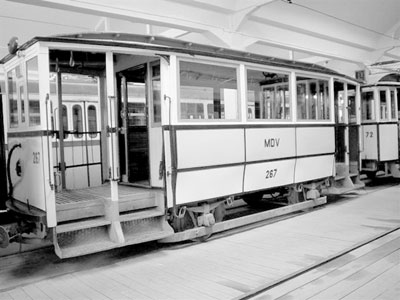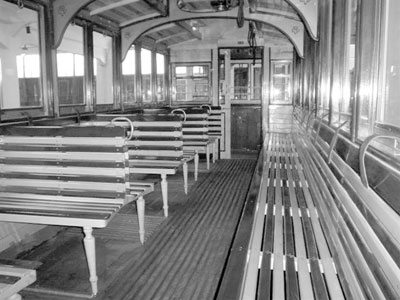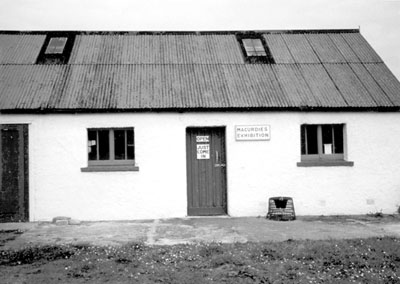Favorite special-interest museums
ITN asked you to name your favorite museum, but not one of the usual, obvious choices like The British Museum or the Louvre; we wanted to hear about your favorite “special interest” museum — the exhibit or collection that really hit a nerve or sparked your imagination, someplace like the Ferrari Museum in Modena, Italy, or the Resistance Museum in Copenhagen. Below are some readers’ selections.
If you have one to suggest, write to My Favorite Museum, c/o ITN, 2116 28th St., Sacramento, CA 95818, or e-mail editor@intltravelnews.com (please include your surface-mail address).
Remember to include where the museum can be found, when you visited it and what sparked your interest.
• I visited the Public Transportation Museum in Szentendre, HUNGARY, in September ’03. It is currently my favorite specialty museum, and it is a must for any transporation buffs who are in Budapest. Szentendre is also worth seeing on its own, as it is a beautiful village on the Danube. Right next to the station in Szentendre, this museum is only a 30-minute commuter train trip from Budapest.
Before I visited the restored trams and streetcars, I went through several large rooms of fine maps and photographs showing, for example, the start of every new tram or metro line in Budapest. The “icing on the cake” came when I moved into the large covered area presenting a couple of dozen beautifully restored trams and trains. Others awaited their restoration out of doors.
Although foreigners are not always granted the senior fare, they did extend this privilege to me, and the cost to enter this wonderful museum was 90 forints (about 39¢). For much of the time I was by myself and a lady would go ahead of me and turn on the lights in the next room. As I returned to the entrance, knowing their electricity is expensive, I turned off the lights.
• If I’m allowed another “museum rave,” it would be for a photo museum in Vienna, AUSTRIA, called WestLicht. I went on a rainy afternoon in fall ’03 and, as a photographer, was absolutely thrilled.
At the heart of the museum is a beautifully displayed collection of about 800 cameras, including many Leicas as well as Japanese and Russian models. Many were of limited production and were frightfully expensive.
Westlicht also has changing exhibits plus an excellent website. The entry cost was €3 (about $3.80).
Earl Johnson
Dowling Park, FL
In September ’03 my husband and I spent 10 days in Dublin, IRELAND. I was attracted to the Chester Beatty Library by reading in the “Rough Guide to Dublin” that it had been named “European Museum of the Year” in 2002. Located on the grounds of Dublin Castle, this wondrous exhibit is not to be missed.
Chester Beatty was a mining engineer born in New York. After losing his wife and suffering from ill health, he moved to London and eventually to Ireland. Upon his death in the late 1960s, his collection was bequeathed to a trust. The current building at Dublin Castle opened in 2000.
Beatty is best remembered as a book collector, and his treasure of Qur’ans (Korans) is the most extensive in the world. Excitement flowed in my viewing magnificent, detailed, illuminated manuscripts and hand-tooled, unique bookbindings. The dazzling miniatures, emboldened with bright colors (often crimson red), were breathtaking.
I also marveled at the East Asian exhibit with decorated snuff bottles and brush-stroke paintings — all from China.
Set aside at least an hour and reserve some time to have lunch at the Silk Road Café, which features tasty Mediterranean food and is on the premises. Entrées run about €9.50 (near $12), with a small bottle of wine (one person) €4.40.
Elinor Sanders
Rancho Santa Fe, CA
• One afternoon in Takayama, in the JAPANESE alps, we visited the Festival Float Museum, which has a rotating display of four of the 23 incredible floats used in the famous Takayama spring and autumn matsuri parades.
The floats were amazing. We had seen their 3-story storage garages scattered throughout the town and so knew to expect large objects. They were tall structures on little 4-wheeled (in one case, 3-wheeled) carts, plus, as a bonus, one portable shrine. The shrines were gaudily colored with various decorations: carved dragons, golden bells, feathers and the like. One float had a seated Buddha on the third story and acrobat marionettes with moving parts which would be operated by puppeteers.
All of this was described in great detail in a tape recording which was loaned to us along with a cassette player when we entered (with many apologies that no one who spoke English was there to guide us).
Sadly, we couldn’t get out among the floats. They were penned up in a great glass enclosure like a huge, dry aquarium, though there was a second-floor ramp that allowed us to look down into the display. They were crowded together along with mannequins in period dress posed in position to haul the floats.
Taking photos was difficult because flash was not allowed, the lighting was abominable and the glass created reflections.
The exhibition hall is operated by the shrine which is nearby, and the display was hosted by girls dressed in the same garb that we saw at many temples throughout the country.
• The Festival Float Museum is my favorite “uncommon” museum, but actually my favorite museum exhibit is one of the standard “everyone visits” sites: the bronze bell exhibit at the Shanghai Museum in Shanghai, CHINA. We have sat for hours there listening to the taped bell music.
Jane Holt
Hinesburg, VT
Upon the advice of Roy Phelps, my host at the Kilmuir House B&B in Kilmuir, Isle of Skye, Scotland, U.K., I walked off to a lonely, wee house on a road near the sea. The sign on the door read, “Open — Just come in,” so I did. I didn’t expect much, and I certainly didn’t expect to laugh out loud, but I did.
Macurdies Exhibition is a homemade, handmade, tongue-in-cheek wee wonder of island life. Inside there is a flora-and-fauna display of the native environment. It is informative, but, more importantly, it is funny. For example, next to the displays of “The Thistle” and “The Field Daisy” there are “The Discarded Lager Cans” (with Latin names, too).
Every few feet there is a sign reminding the visitor to sign the guest book and — ahem — “kindly offer a donation.” Guests from all over the planet had signed in (I saw Australian, Canadian and European visitors listed) and left funny messages to the curator, who was curiously absent.
Irreverent, quirky and silly. I loved this museum. Just a mile or so from the Isle of Skye Museum, it is a must if you are on Skye.
Jennifer M. Eisenlau
Boulder, CO
My family and I went on a trip through the Alto Adige in summer ’03. The Alto Adige, or South Tirol, is the northernmost part of ITALY that used to be (in) Austria. It is lovely country with apple orchards and vineyards wherever you look. Traveling to this part of the world is really worth it for many reasons, one of which is the following.
• The first museum experience we had was in Bolzano/Bozen (all the place names have to be in both Italian and German!), where we went to the Ötzi Museum, which houses the prehistoric “Iceman” and a fascinating anthropological exhibition about the life and times of this unique exhibit.
• On our way from Bolzano to the Passo Resia/Reschenpaß, on the hill to the right we saw a huge medieval fortress, Castel Coira/Churburg, and decided to have a look at it.
We were lucky in that a guided tour in English was available right away, and so we saw an amazing collection of treasures, the most notable being the world’s most important private armory, which included the “personal wardrobe” of the Counts of Matsch and von Trapp as well as the armor that was used by their private armies. Even Leonardo da Vinci was once employed for Gaudenz Vogt von Matsch!
Both of these museums kept our children interested, which, as you can imagine, is a vital aspect of family travel!
I do hope you will have a chance to go to Alto Adige some day. There are so many wonderful things to see!
Lynne Armstrong
West Vancouver, B.C.
In St. Petersburg, RUSSIA, back in 1993, we found a little, out-of-the-way museum: The History of Leningrad Museum. Although it was under renovation, we decided to take a chance.
The museum was completely torn apart, unorganized, poorly marked and dusty. However, a young woman and her 5-year-old son appeared out of a back room. With no common language but using appropriate gestures, she managed to ask if we would like to see a movie.
A short walk ended in a small, dark room which contained two metal chairs, a movie screen and a projector. She started the ancient projector and, to our utter amazement, there was a 30-minute movie — with English voice-over — about St. Petersburg during the Second World War.
We were mesmerized by the footage. It was raw film, taken from 1941 through 1945, and showed in great detail the terrible times of that era. The memory will be with us forever.
Harry & Barbara Hubinger
Danville, CA



